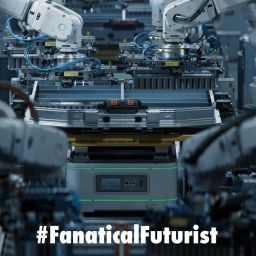WHY THIS MATTERS IN BRIEF
Increasingly humanoid robots are taking human workers jobs – and these robots work 247 and are getting better all the time.
 Love the Exponential Future? Join our XPotential Community, future proof yourself with courses from XPotential University, read about exponential tech and trends, connect, watch a keynote, or browse my blog.
Love the Exponential Future? Join our XPotential Community, future proof yourself with courses from XPotential University, read about exponential tech and trends, connect, watch a keynote, or browse my blog.
BMW is taking a bold step toward the future by integrating humanoid robots into its production lines. This move is part of the company’s iFACTORY vision, which focuses on modernizing car manufacturing through automation and smart technologies. One of the key developments in this strategy is the introduction of Figure 02 humanoid robots at BMW’s Plant in Spartanburg, South Carolina.
Developed by California-based startup Figure, the robots have now returned to Spartanburg for more trials. These robots aren’t just running tests in a lab – they’re working alongside BMW’s existing machinery, carrying out tasks with precision.
In a newly released video, a Figure 02 robot is seen retrieving metal parts from a mobile shelf and placing them onto a welding fixture. Another robot stands nearby, ready to join the action.
See them in action
The video also demonstrated the robot’s fine motor skills by showcasing a high-precision sheet metal insertion. It’s a glimpse into what the future of automotive manufacturing could look like – with humanoid robots doing more than just repetitive tasks.
Figure’s founder and CEO, Brett Adcock, shared his excitement about the achievement on social media. He posted, “This isn’t a test – this is what autonomous robots in production operations look like. Turn the music up!”
He continued, “It’s critical to have humanoid robots in the real world, at scale. As more robots are deployed, costs will decrease, and intelligence will improve.”
Adcock also recently posted another message, calling the rollout historic. “You’re witnessing something special: the world’s first commercially deployed humanoid robots,” and he listed four key reasons for why this moment matters.
Fully Autonomous Operations: The robots are not remote-controlled. They’re carrying out entire tasks on their own, a level of autonomy that requires intense software development and reliability improvements. Adcock noted, “We had to refactor subsystems repeatedly over the last year to make the system robust.”
Integration at a Real Facility: It’s one thing to have robots work in a lab, but deploying them in a functioning plant is another level. “Our robots have been permanently deployed at BMW,” he said. The challenge? Ensuring software releases function correctly across all units.
Fleet Intelligence: The more robots Figure deploys, the more data it collects. These data help train all robots in the fleet, allowing them to learn from each other. “The more robots in the world will mean a more intelligent fleet,” Adcock emphasized.
Manufacturing Scale with BotQ: Figure recently opened BotQ, its own manufacturing facility. This factory will produce thousands—eventually millions—of humanoid robots. According to Adcock, “Every real-world deployment, such as this, makes our high-rate manufacturing capabilities even stronger.”
In earlier trials held in November at the same BMW plant, Figure 02 showed a 400% speed boost and a sevenfold improvement in task success rates compared to previous performance benchmarks.
The Figure 02 humanoid robot is a major upgrade from its predecessor, Figure 01, which launched just 10 months prior. It’s been engineered specifically for performance in real-world industrial environments.
One of the biggest changes is in durability. All cabling is now hidden within the robot’s limbs, protecting it from damage. The battery, which is 50% larger than in Figure 01, is built into the torso for better balance and extended operation time. The robot’s limbs – shoulders, elbows, hips, and knees – have also been refined for efficiency.
In terms of intelligence, onboard computing and Artificial Intelligence (AI) power have tripled. Figure 02 has six RGB cameras and a Large Vision Model (LVM), helping it recognize objects, avoid obstacles, and coordinate hand-eye tasks. Its hands, with 16 degrees of freedom, can lift up to 55 pounds (25 kg) and mimic the dexterity of a human grip. Each finger contains its own set of motors and sensors, enabling precise manipulation of parts.
Figure signed a commercial agreement with BMW in January last year, aiming to bring general-purpose humanoid robots to the automotive industry. This partnership marked one of the first times humanoid robots were commercially deployed in a U.S. manufacturing environment.
The company has raised more than $700 million in funding since its launch in 2022. Its backers include major players like Microsoft, Nvidia, Intel Capital, and Jeff Bezos through his investment firm. Reuters reported in February that Figure is now working to raise another $1.5 billion, potentially pushing its valuation to nearly $40 billion.















